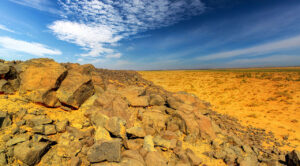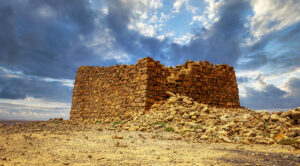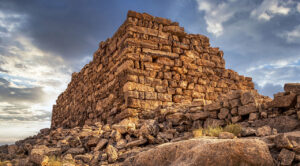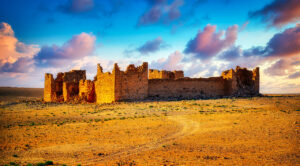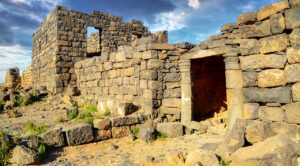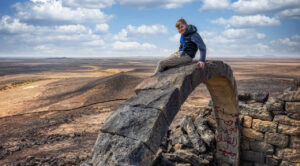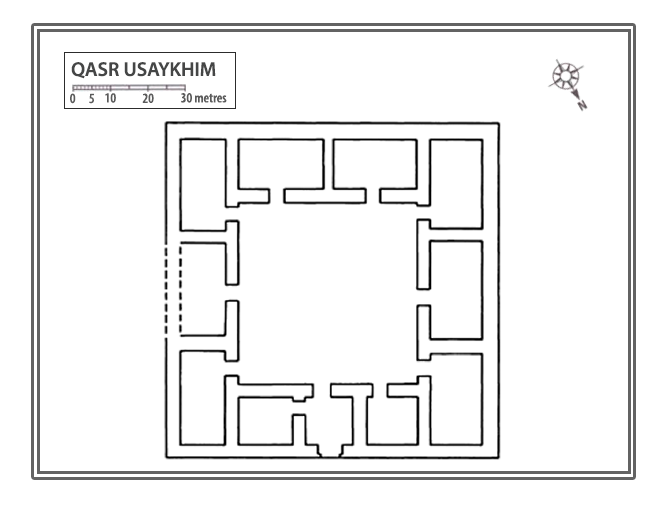Perched atop a windswept hill 22 km north of Azraq, Qasr Usaykhim is a fascinating historical site that rewards visitors with breathtaking desert panoramas and a glimpse into Jordan’s rich past. The fort, accessible via the Azraq to Safawi road towards the Iraq Highway, is best reached with a 4-wheel drive – though it isn’t strictly necessary. A steep but manageable climb to the summit reveals not only unmatched views of the surrounding landscape but also the architectural remnants of this strategically located fort.
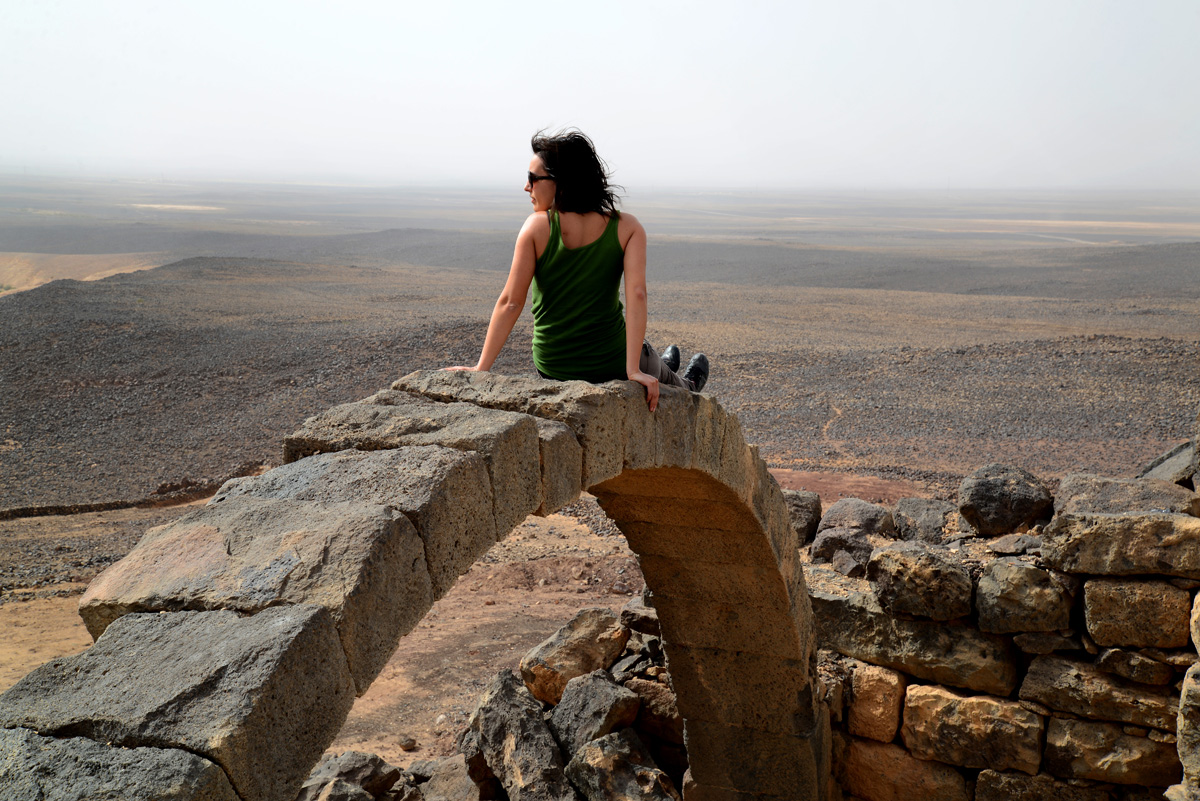
Architectural Highlights
Constructed of dark basalt stone, Qasr Usaykhim is a square-shaped fortress with rooms arranged around a central courtyard. The entrance, located on the eastern side, features a gatehouse and a still-standing arch, offering a sense of the fort’s strength and design. Within the courtyard, internal arches once supported the now-lost ceilings, but several remarkably still stand in the east, south, and west rooms, giving clues to its structural ingenuity. Although there is no evidence of a second storey or inscriptions on-site, its distinct design captures the resourcefulness of its builders.
Archaeological and Historical Intrigue
Signs of earlier human activity are scattered around the site, including flints, a boulder wall, and nearby kites—stone-walled enclosures believed to have been used for hunting game.
These findings suggest the site may date back to the Nabataean period, preceding the Roman presence in the area. Despite its commanding position, the fort’s importance seems to have been modest, potentially serving as a lookout to observe the region and, notably, keeping watch over Qasr Azraq in the distance.
Challenges of Sustenance
One of the more intriguing aspects of Qasr Usaykhim is its struggle with water provision. Evidence suggests that rainwater was collected and stored in a hollow on the northern side of the hill, with a dam wall used to block the flow. This scarcity of water must have posed significant challenges to those stationed here, making life at the fort tough despite its strategic advantages.
A Rewarding Visit
For those seeking solitude and a sense of wonder, Qasr Usaykhim is a destination not to be missed. The panoramic views from the top make the climb worthwhile, offering visitors a unique perspective of Jordan’s vast desert landscape. If you’re already planning to visit celebrated sites like Qasr Kharana, Qasr Amra, and Qasr Azraq, take the time to drive a little farther and uncover the secrets of Qasr Usaykhim. Here, you’ll feel like you’ve stepped into a serene, otherworldly realm, standing alone atop the world.
Prepare to immerse yourself in a history-rich experience, where the desert winds carry the whispers of those who once called this fort home.
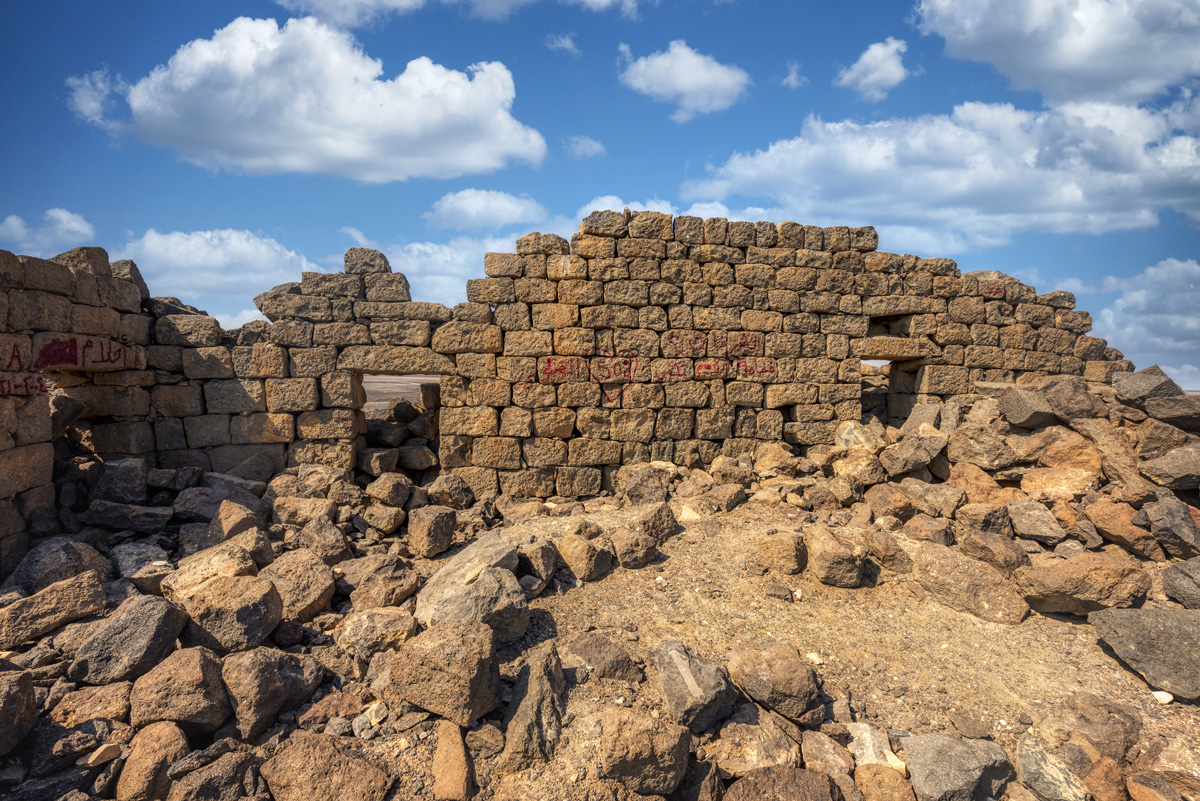
Qasr Usaykhim, located in the arid expanses of northeastern Jordan, is a Roman-era fort that holds immense historical and archaeological value. Dating back to the late Roman period, likely in the 3rd or 4th century CE, this small fortification was part of the Roman Empire’s extensive frontier system, known as the Limes Arabicus. This defensive network aimed to safeguard the empire’s eastern borders and monitor the movements of Bedouin tribes, traders, and potential invaders.
Built using locally sourced black basalt, the fort’s sturdy rectangular structure exemplifies practical Roman military engineering designed to endure the harsh desert conditions. The layout includes defensive walls, small internal rooms, and observation towers, offering a glimpse into the strategic foresight of Roman builders. Its location on elevated terrain provided sweeping views over nearby trade and migration routes, making it an ideal vantage point for monitoring the region.
Some evidence suggests Qasr Usaykhim may have served as a garrison for auxiliary troops tasked with maintaining local security and facilitating communication along the eastern frontier. While much of its history remains shrouded in mystery, it underscores the Roman Empire’s far-reaching influence.
Today, Qasr Usaykhim survives as a fragile remnant of antiquity, with preservation efforts essential to protect it from erosion and further deterioration.
